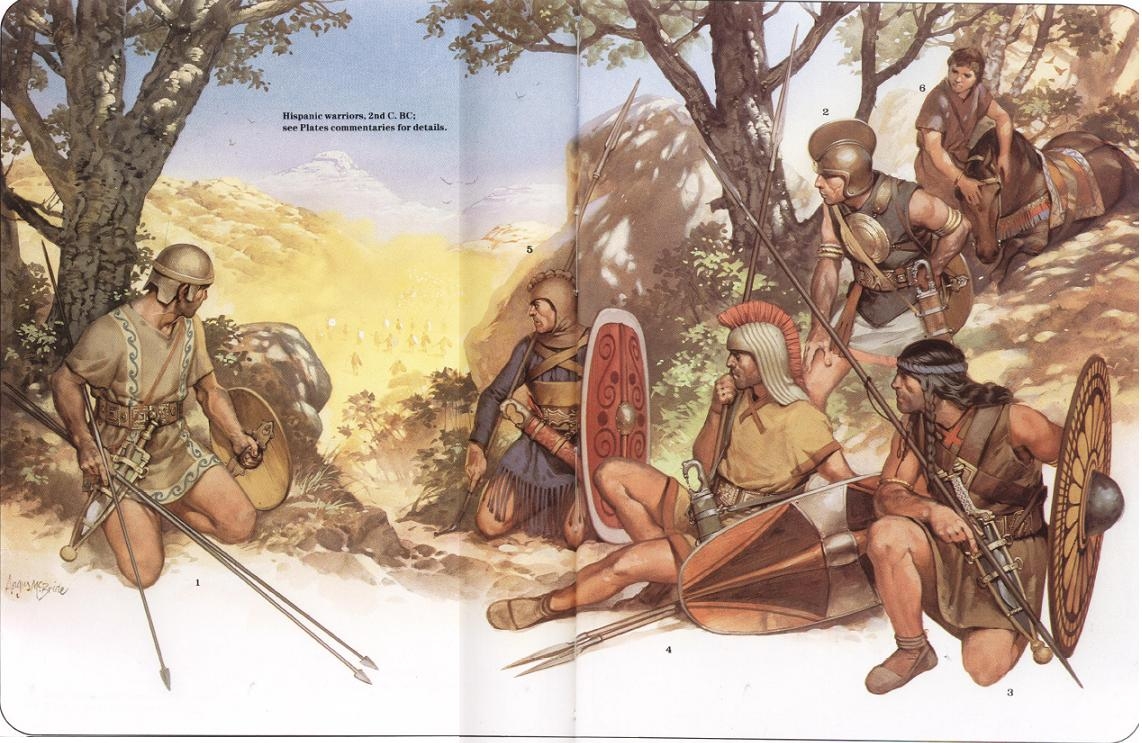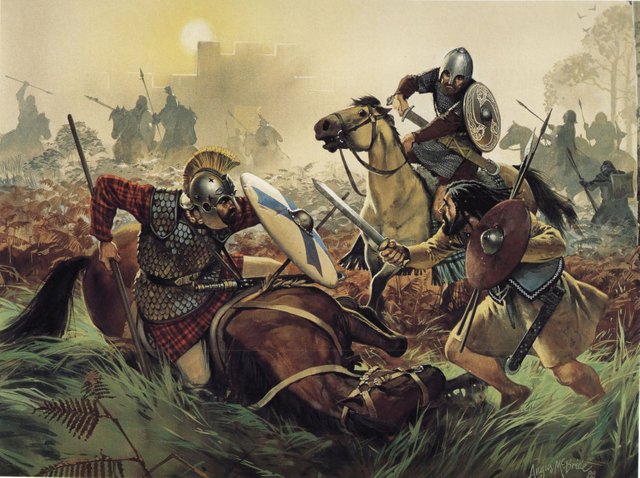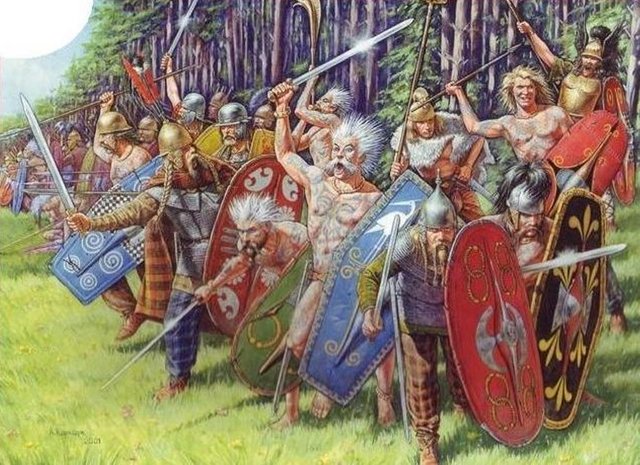Forgotten Celtic tribes part 1
Celts are among first settlers of Europa. They were a group of Indo-European people, who shared the same language. They spared true out central and western Europa, Pyrenees, Apennine peninsula and the British Isles. Celts had a significant influence on the history and culture of Europa and beyond. Among them were many significant and most interesting historical characters (Vercingetorix, Viriatus, Boudica...). So let me present you some of their most interesting and influential tribes.

Lusitanians
The Lusitanians, per Strabo and Pliny (35-47 tribes), consisted of dozens of tribes in the region near the Tagus river that combined into a loose confederacy that united at times of war or emergencies (such as during the Carthaginian and Roman incursions). Strabo defined the Lusitanii as "the greatest of Iberian tribes that the Romans fought for a long time". The sources emphasize that they were typically lightly armed, but fierce and happy to lay ambushes. The stereotype most people have of Iberian warfare largely comes from these people.
"They say that the Lusitanii are skilled in ambushes and chassis, swift, quick and stealthy; they wield small shields two feet wide and concave in their outside, being maneuvered with the help of two straps around the neck, and, so it seems, without grips. Beyond that, they use daggers or knives. Most of them wear linen armors and leather caps; very few of mail armors and three feathered helms. Some infantrymen also use greaves, and each of them carries several short spears; some of them with bronze tips". - Strabo of Amasya (Pontus), Greek historian, 63 BC - 24 AD
In 150BC, a group of Lusitanii tribes forced by war devastation to seek fertile lands were promised peace and lands by consul Servius Sulpicius Galba. He invited the Lusitanii (unarmed) to an open field, and once there, he ordered his troops to attack and annihilate the defenseless crowd. Very few survived the slaughter. One of them was a brilliant tactician called Viriatus.
Viriatus rose as a popular leader and persuaded his countrymen to resist the Roman rule. Under his command, Lusitanii defeated the Romans in 147BC. That started a long and humiliating war for Romans. In the next 7 years, he defeated all the armies Romans send after him. Then, in 140BC, the Senate sent an army under Fabius Maximus Servilianus, which Viriatus succeeded in trapping. Instead of destroying this army, he concluded a peace and allowed the Romans to leave. Roman Senate broke the treaty after less than a year. In 139BC, a tired Viriatus sent three men to negotiate peace to the Roman quarters. When they got back, the bribed emissaries killed Viriatus. They never enjoyed their reward. When they got back to consul Quintus Servilius Scipio, he ordered their execution, saying: "Rome does not reward traitors". The death of Viriatus marked the beginning of the end of Lusitanii resistance, but not of its myth.

Aeduii
They were first mentioned by the Roman writer and historian Livy. He was writing about the Celtic invasion of Italy around 500 BC. Aeduii were among those tribes. Aeduiis most regular territory included the greater part of the modern departments of Saône-et-Loire, Côte-d'Or, and Nièvre. Around first century BC, the Aeduii are at the head of a tribal confederation that included around 10 Gallic tribes. Their confederation was only rivaled by the one around Arverni.
War was always in their blood. Most of Aeduii society and their hobbies centered around it. As in any Celtic kingdoms, their leader is elected. The tribes elect a chief, chiefs of an area elect a chieftain, chieftains elect kings over a larger area, and the kings elect the high king. The Aeduii also elected magistrates.
Since the time of their incursion into Italy, they had attached themselves to the Romans and were honored with the title of brothers and kinsmen of the Roman people. But after the loss of war against Arverni and the pressure of neighboring tribes, Aeduii decided to join the Gallic coalition against Caesar. After the surrender of legendary Arverni chieftain Vercingetorix at the Battle of Alesia, they returned to their allegiance to Rome. Aeduii continually rebelled for a long time after. But at the end, as the other Gaul’s, they were also completely absorbed by the Romans.

Arverni
The Arverni were formed as a confederation of minor Gallic tribes, probably including the Vellavi, whom Strabo says were once a part of the Arverni. They reach the height of their power and influence under the leadership of Luernios in the first half of the second century BC. After a collapse of the Cubi-Biturge confederation, as I mentioned, they started a war for supremacy in Gaul with Aeduii. The war that Arverni eventually won.
In the year of 52 BC, Gaul’s begin their revolt, resolving to die in freedom rather than be suppressed by the invaders. Arverni were joined by Aulerci, Cadurci, Lemovices, Parisii, Pictones, Senones, Turones and a lot of smaller tribes. Their chief Vercingetorix was selected as a leader of a tribal confederation. After losing some minor battles, Gaul's manage to force Ceasar to withdraw from his siege of a major town called Gergovia. They pursue Ceasar but he called loyal German tribes for help. The ensuing counterattack forced Vercingetorix to fallback to a major fort called Alesia. Caesar begins the siege of Alesia, aiming at starving the inhabitants. Four relief forces amounting to a considerable number of men and horses are assembled in the territory of the Aeduii by the council of the Gaulish nobility. Together they attempted to relieve Vercingetorix at the siege of Alesia, but the combined relief force is soundly repulsed by Julius Caesar's remarkable strategy of simultaneously conducting the siege of Alesia on one front whilst being besieged on the other. Seeing that all is lost, Vercingetorix surrendered to Caesar.

Caledones
This is the name of people who lived in the Scottish Highlands and Islands. The Romans used the word Caledones to describe single tribe who lived in the Great Glen between the modern towns of Inverness and Fort William. But sometimes Romans referred to Caledonians as all the tribes that lived in the north. We know the names of some of these other tribes. They include the Cornovii and Smertae who probably lived in Caithness, the Caereni who lived in the far west of the Highlands, the Carnonacae and the Creones in the Western Highlands.
Warriors from many of these tribes came together to resist the Romans under a leader called Calgacus at a battle of Mons Graupius in 84 AD. Although the Romans won this battle, they never successfully conquered the Highlands. In 142 AD the Romans built the Antonine Wall from the Forth to the Clyde to try to stop them from disturbing the peace of the Empire. They spoke a different language than the tribes of Britons to the south. Tacitus described them as red-haired and large-limbed. Also admires them for their ability to endure cold, hunger and hardship. Pictland is obscured from history for most of the period of Roman rule in Britain. Reason being their exclusion from the Roman Empire and an absence of internal writings. From 209 to 211 AD, The Roman emperor, Severus, leads a campaign in person against the Caledones and Maeatae. Following Severus' death, either immediately or shortly afterward, Rome permanently abandons Scotland.
Pictures were taken from Pinterest and http://www.ancient-origins.net
Resteemed by @resteembot! Good Luck!
The resteem was payed by @greetbot
Curious?
The @resteembot's introduction post
Get more from @resteembot with the #resteembotsentme initiative
Check out the great posts I already resteemed.